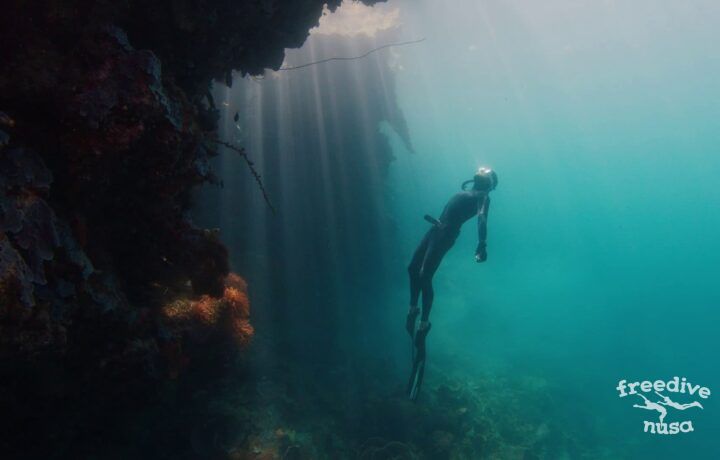Freediving is more than just an extreme sport. It’s a meditative experience, a way to connect with the ocean on a deeper level. Unlike scuba diving, which relies on bulky equipment, freediving is about mastering breath control and gliding effortlessly through some of the world’s most breathtaking underwater landscapes. And when it comes to freediving, few places rival Indonesia’s diverse marine ecosystems.
From vibrant coral reefs to mysterious underwater caves, Indonesia’s archipelago offers unparalleled freediving opportunities for both beginners and seasoned divers. Here are ten of the best spots to explore beneath the waves.
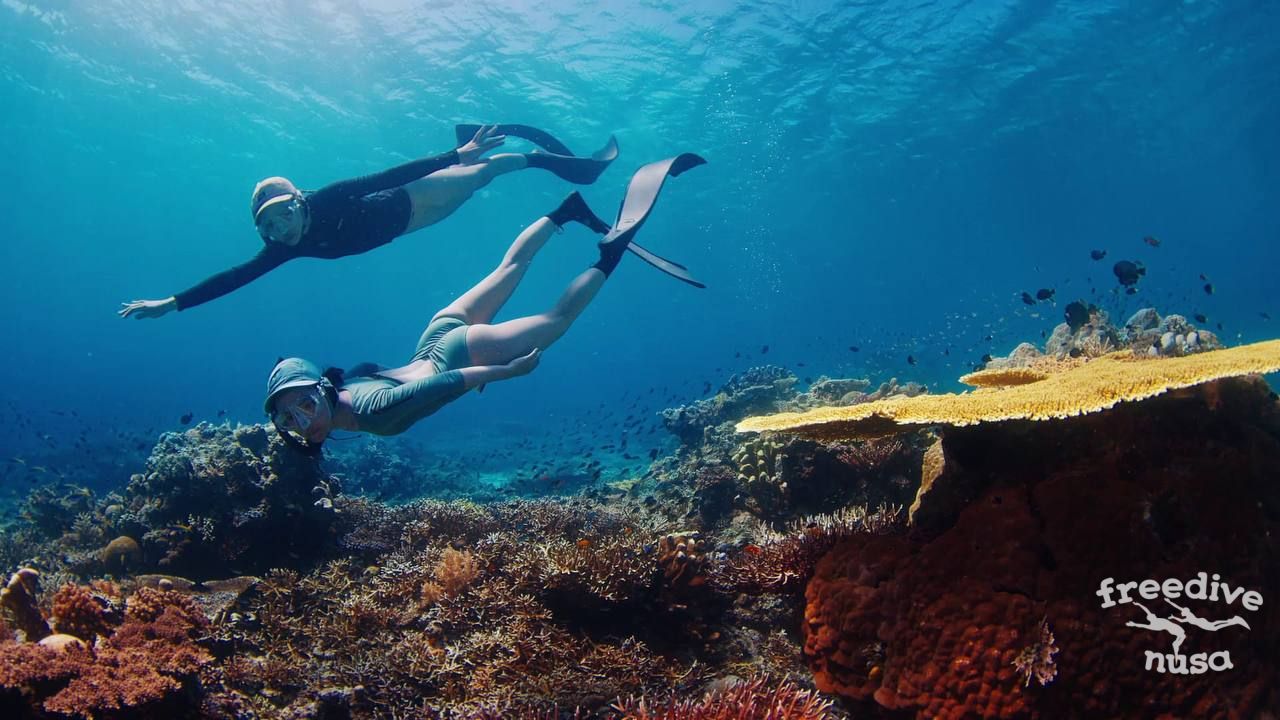
1. Nusa Penida
Just a short boat ride from Bali’s southeastern coast, Nusa Penida emerges as a freediving mecca, where the ocean’s raw power and tranquility exist in perfect harmony. The island’s underwater topography is a dramatic interplay of steep drop-offs, swirling currents, and thriving coral ecosystems that attract pelagic species year-round.
Freedivers here are often rewarded with close encounters with manta rays at Manta Point, where these gentle giants glide through nutrient-rich waters. The site’s cleaning stations make for predictable sightings, allowing divers to observe the mantas’ intricate social behaviors.
What sets Nusa Penida apart is its accessibility for all skill levels. Beginners can hone their skills in the sheltered coves of Gamat Bay, where turtles weave through coral bommies, while advanced divers test their limits at Toyapakeh’s drift dives, carried along by currents that reveal reef sharks and barracuda formations.
Ready to glide with the giants? At Freedive Nusa, our daily Manta Trips are designed to bring you face-to-face with these majestic creatures in their natural habitat. Join us for an unforgettable adventure beneath the waves!
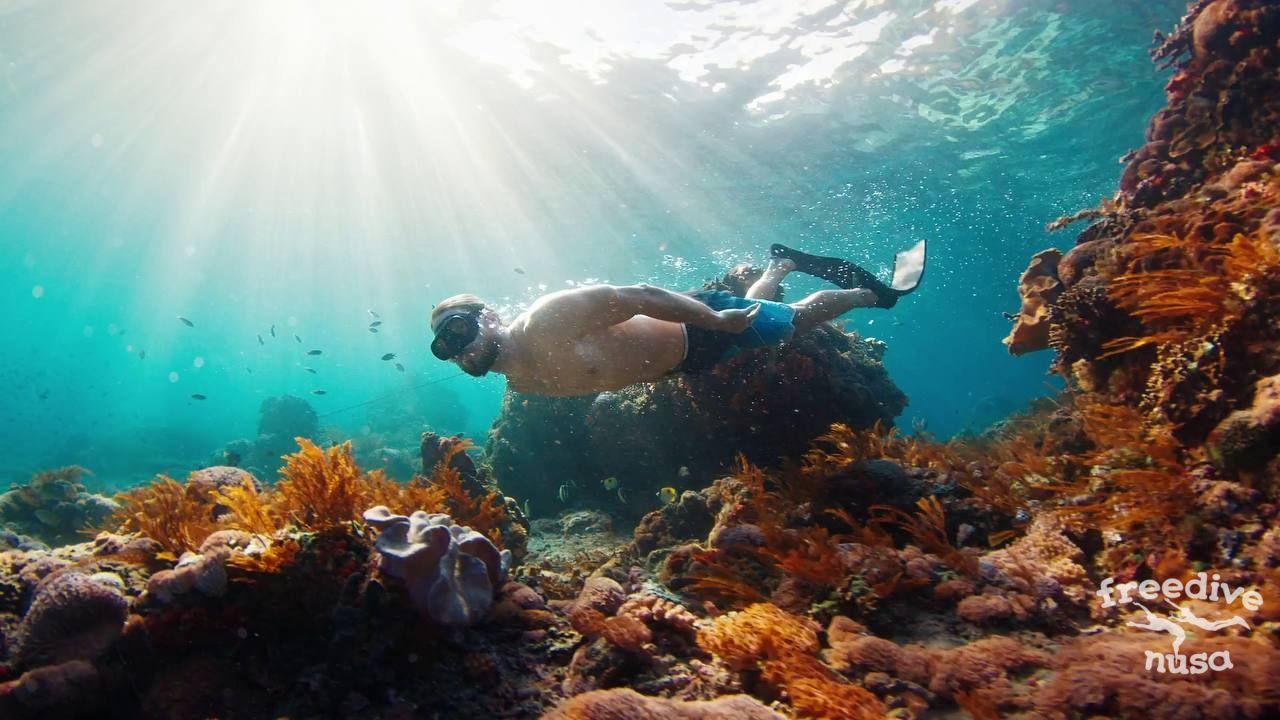
2. Komodo
Beneath the emerald waters surrounding Komodo National Park lies a world where nature’s artistry unfolds in vibrant hues. This UNESCO World Heritage Site, nestled near Flores Island, offers freedivers an unparalleled underwater diversity. Manta rays glide effortlessly through crystal-clear currents and coral reefs pulse with life there.
The park’s magic exists in perfect duality: while legendary Komodo dragons patrol shores above, beneath the surface unfolds an equally mesmerizing realm. At sites like Manta Point, these graceful giants circle cleaning stations, their wing-like fins nearly brushing against awestruck divers. The underwater topography varies from Sebayur’s coral slopes teeming with parrotfish to Gili Lawa’s drift dives where schools of barracuda form living silver curtains.
What makes Komodo truly special is its accessibility to all levels of freedivers. Beginners can marvel at Taka Makassar’s shallow coral gardens, while advanced divers test their skills in the channel currents where reef sharks patrol.
Between dives, the islands reveal their otherworldly beauty: pink sand beaches formed from crushed coral, fiery sunsets over Padar Island’s jagged silhouette, and the primal thrill of encountering Earth’s last dragons in their natural habitat.
Ready to answer the call of the wild? At Freedive Nusa, our exclusive Komodo expeditions are designed to immerse you in this dual world of dragons and manta rays. Join us for the ultimate freediving adventure where myth and marine life collide!
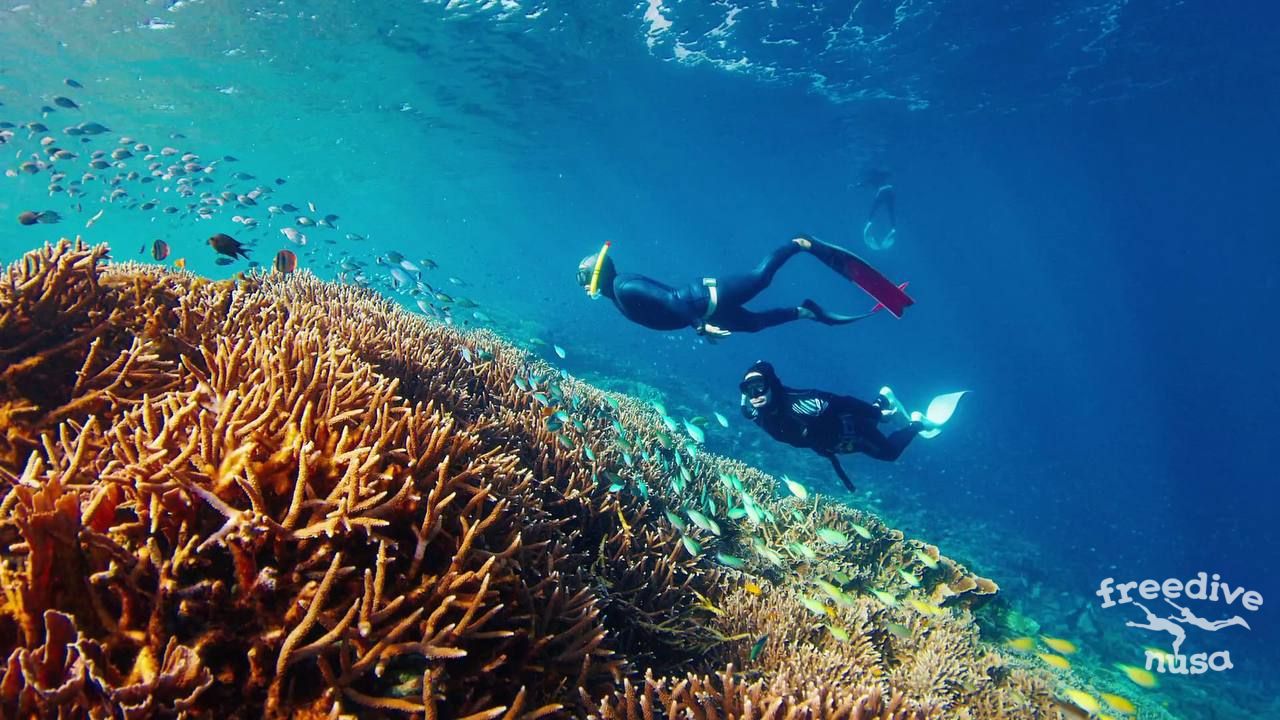
3. Raja Ampat
Raja Ampat is a living laboratory of evolution. Situated in the heart of the Coral Triangle, this archipelago’s 1,500 islands shelter over 75% of the world’s known coral species. Freediving here feels like floating through a submerged kaleidoscope, where every turn reveals new textures, colors, and creatures.
The Dampier Strait, in central Raja Ampat, is where the action unfolds. Strong currents funnel nutrients through narrow passages, attracting massive schools of fish. At Cape Kri, it’s not uncommon to drift alongside swirling tornadoes of fusiliers, while trevally and reef sharks patrol below. Further south, Misool’s labyrinth of karst islands hides secret lagoons and caves, their walls adorned with soft corals that pulse with life.
Above water, Raja Ampat is equally mesmerizing. The viewpoint at Piaynemo offers a panorama of jagged limestone islets rising from turquoise waters – a sight so surreal it seems lifted from a fantasy. For freedivers, the real magic lies in the region’s remoteness. Unlike crowded dive sites elsewhere, Raja Ampat’s underwater world remains pristine, with encounters so intimate they feel exclusive.
Ready to explore the epicenter of marine biodiversity? At Freedive Nusa, our guided trips unlock the very best of Raja Ampat, from the thrilling currents of the Dampier Strait to the hidden wonders of Misool’s lagoons. Join us for expeditions to the planet’s ultimate underwater kingdom!
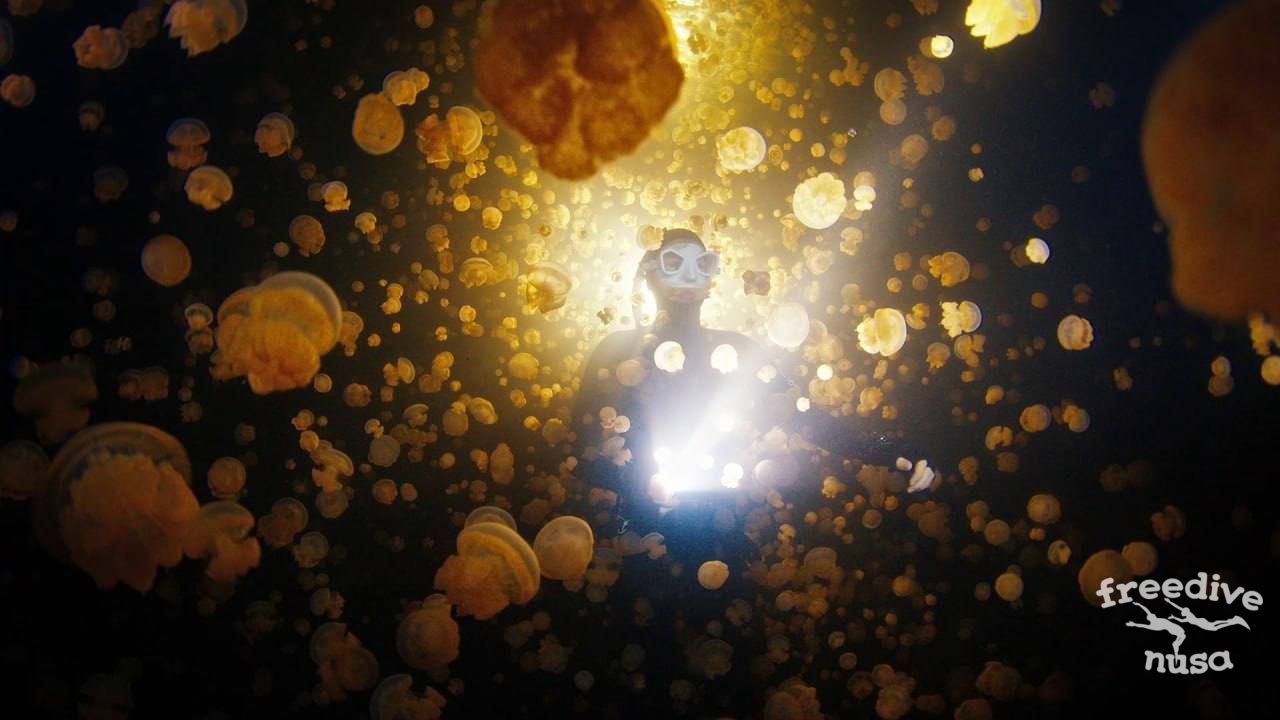
4. Alor
For those willing to venture off the beaten path, Alor is Indonesia’s best-kept secret. This rugged archipelago in East Nusa Tenggara lacks the tourist infrastructure of more famous destinations, but that’s precisely its allure. Here, freediving is still a raw, unfiltered experience – a chance to explore walls and caves that few have ever seen.
Alor’s underwater terrain is dramatic. Sheer drop-offs plunge into the abyss, their surfaces alive with gorgonian fans and black coral trees. Currents sweeping in from the Flores Sea bring nutrient-rich waters, attracting everything from pygmy seahorses to passing pods of dolphins. At Kal’s Dream, a signature site named after a local dive pioneer, divers descend along a coral-covered wall where eagle rays and dogtooth tuna patrol the blue.
What makes Alor truly special is its cultural dimension. The region’s indigenous communities have lived in harmony with the ocean for centuries, and their traditional fishing techniques are a testament to this deep connection. Freediving here isn’t just about marine life, but about immersing yourself in a way of life that remains untouched by mass tourism.
At Freedive Nusa, we pioneer expeditions to Alor, offering access to its pristine sites and a genuine connection with its ancient culture. Join our small-group adventures and be among the first to truly experience the soul of untouched Indonesia.
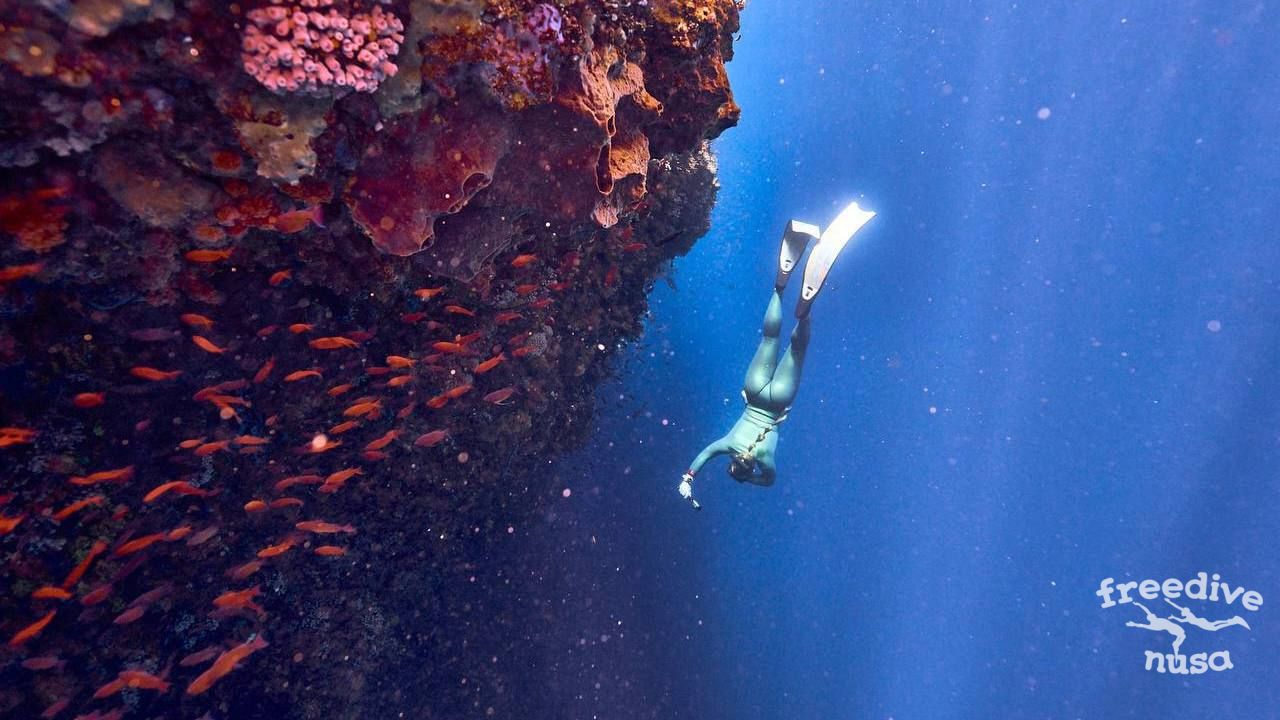
5. Sumbawa
Few experiences compare to the awe of freediving alongside a whale shark, and Sumbawa is one of the best places in Indonesia to make it happen. These gentle giants, some measuring over 12 meters, frequent the bay’s plankton-rich waters, their spotted bodies moving with effortless grace.
Freedivers can spend extended periods swimming alongside the sharks, observing their feeding behaviors (which is a side effect of the activity of local fishermen). The warm, clear waters also host manta rays and turtles, making every dive a multi-species spectacle.
Beyond the whale sharks, Sumbawa’s coastline conceals hidden gems like Moyo Island, where waterfalls cascade into the sea and coral reefs thrive in isolation.
Our expeditions to Sumbawa offer a unique chance to swim with whale sharks and explore hidden places like Moyo Island. Join us for an adventure you’ll remember for a lifetime!
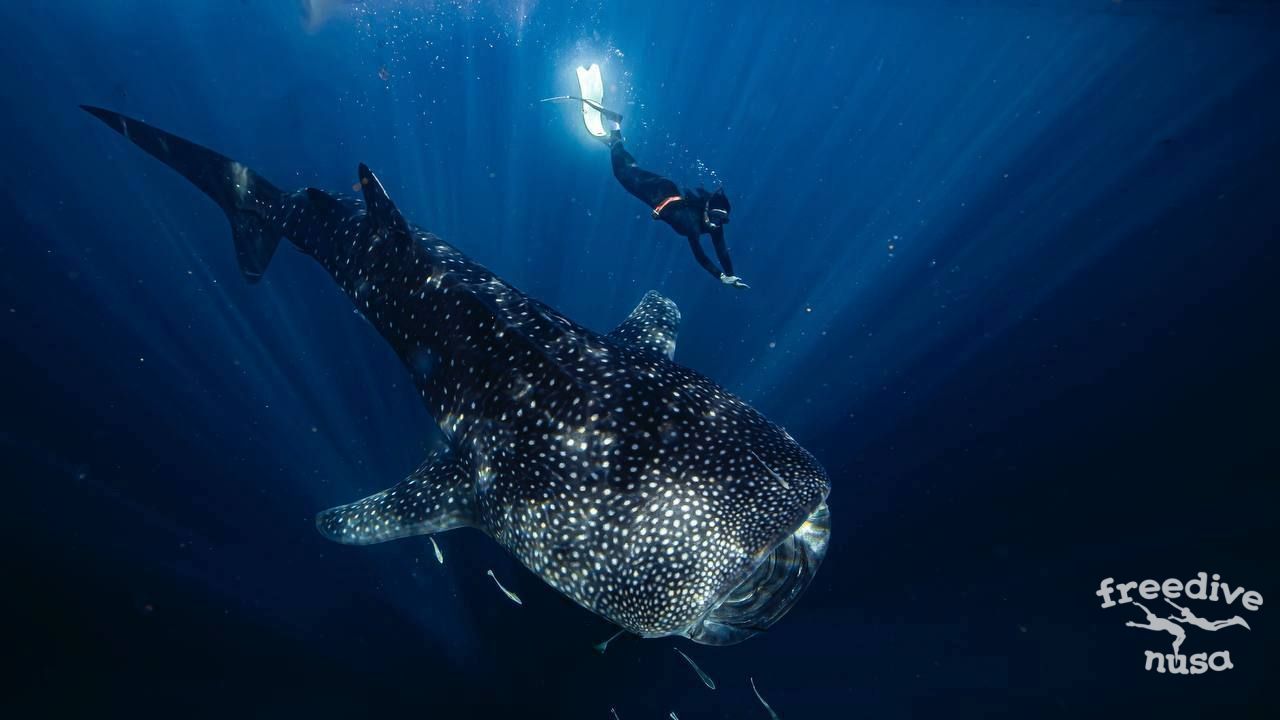
6. Maratua
Shaped like a horseshoe, Maratua Island encloses a vast lagoon where the water is so still it feels like diving in an aquarium. This part of the Derawan Archipelago is a microcosm of Indonesia’s marine wonders, offering everything a freediver can dream about.
Kakaban Island’s jellyfish lake is a highlight. Cut off from the ocean millennia ago, this inland body of water is home to thousands of stingless jellyfish that have evolved without predators. Freediving here is a surreal experience: you float weightlessly among these pulsating creatures, their translucent bodies glowing in the sunlight.
Back in the open ocean, Maratua’s walls are draped in soft corals that sway with the current, while green turtles nest on its beaches. The island’s remoteness ensures that encounters, whether with mantas at Sangalaki or barracuda schools at Big Fish Country, are always exclusive.
Our expeditions grant access to the archipelago’s most pristine spots: from the surreal jellyfish lake to untouched walls teeming with life. Join us for a journey to the edge of the world!
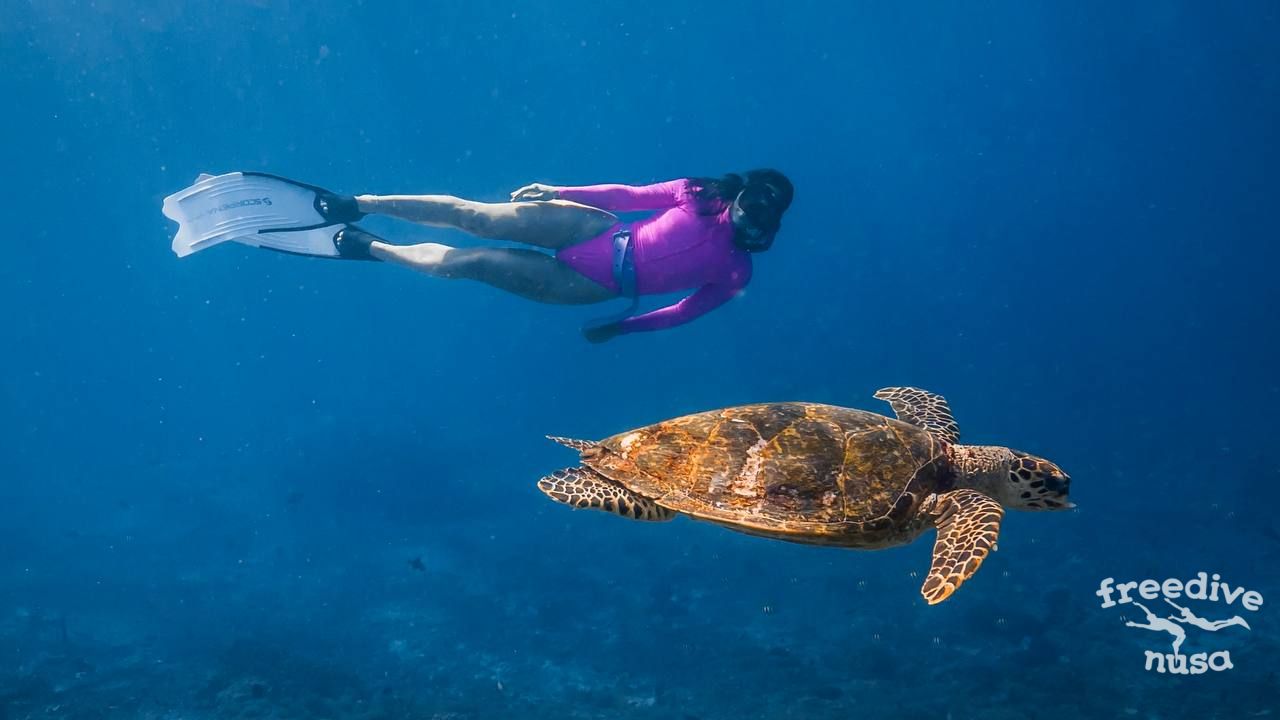
7. Morotai
Tucked away in North Maluku, Morotai remains one of Indonesia’s most untouched freediving frontiers. This island played a pivotal role in WWII, and its waters still guard haunting relics of that era: sunken warships now encrusted with coral and teeming with marine life.
Freediving here feels like time travel. At depths of 15-30 meters, you’ll explore intact shipwrecks like the USS Pringle, its rusted hull transformed into an artificial reef where batfish school and lionfish prowl. Beyond the wrecks, Morotai’s fringing reefs explode with color: neon nudibranchs crawl over sea fans, while dogtooth tuna hunt in the blue. The island’s remoteness means you’ll often have sites entirely to yourself, with visibility regularly exceeding 30 meters.
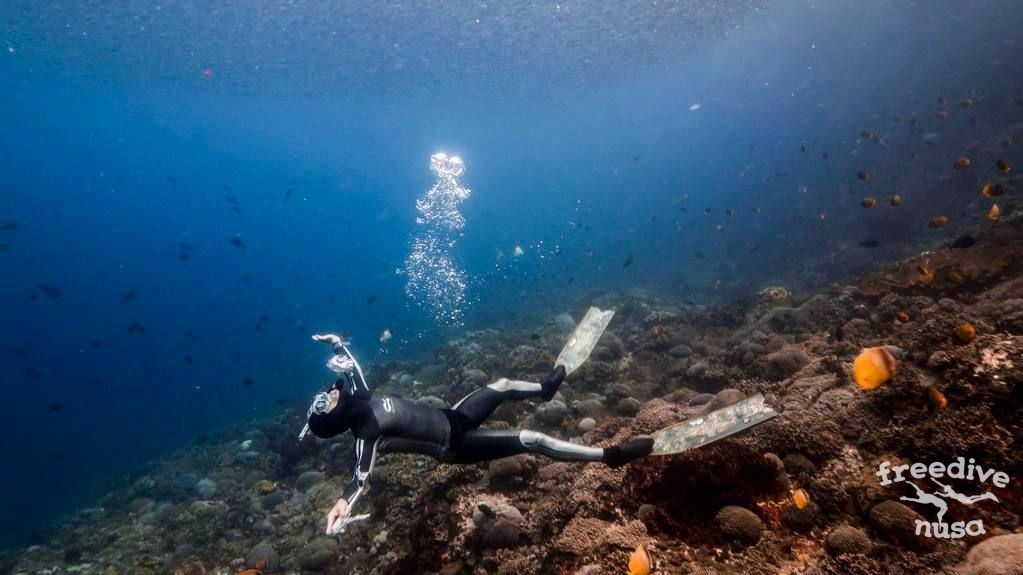
8. Wakatobi
Wakatobi National Park is a UNESCO-recognized masterpiece of marine biodiversity. The archipelago’s name comes from its four main islands (Wangi-Wangi, Kaledupa, Tomia, and Binongko), but its real magic lies beneath the surface.
Imagine freediving along walls where the coral coverage reaches 90%, creating a living tapestry of staghorn thickets, barrel sponges, and delicate crinoids. At sites like Mari Mabuk, you’ll hover above coral gardens so dense they seem to breathe, while midnight snappers swirl around you in golden clouds. Wakatobi’s unique selling point is its “no current” sites – perfect for beginners. Advanced divers can challenge themselves at the channel dives where eagle rays surf the tides.

9. Bunaken
Just off North Sulawesi, Bunaken’s vertical drop-offs plunge over 1,500 meters, creating what many consider Indonesia’s best wall diving. Freediving here is like flying along the edge of an underwater cliff face, where every meter reveals new wonders.
At Lekuan Wall, you’ll drift past curtains of orange soft corals where pygmy seahorses cling to gorgonians. Deeper down, the wall becomes a highway for green turtles and cruising whitetip reef sharks. Unlike many destinations, Bunaken offers exceptional visibility year-round (30m+), and its thermoclines create surreal layers of blue that fade into infinity. The park’s strict conservation policies ensure the coral remains pristine, so giant clams the size of armchairs are common sightings.
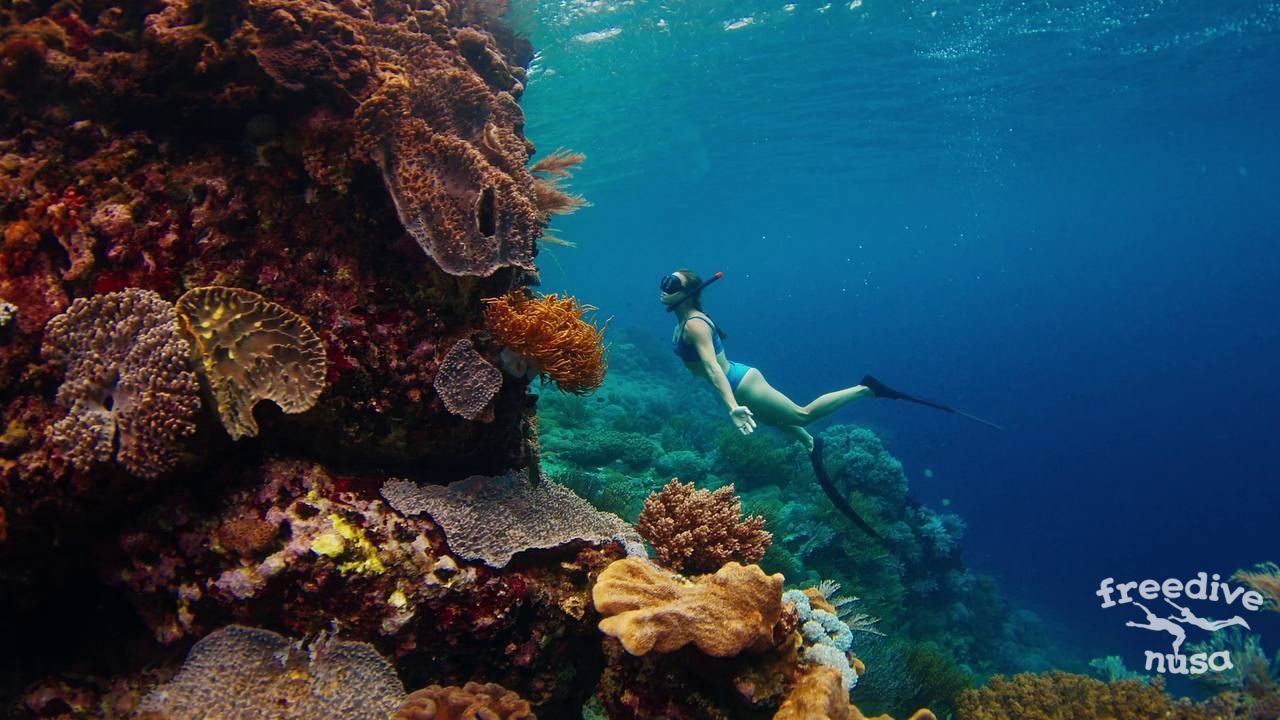
10. Biak
Biak Island in West Papua is where freediving meets adventure archaeology. During WWII, Japanese forces dug an extensive network of caves to hide from Allied bombings, so many now submerged and accessible only to skilled freedivers.
At Goa Jepang (Japanese Cave), you’ll slip through a narrow entrance into a cathedral-like chamber where sunlight filters through cracks, illuminating rusted artillery shells and sake bottles left behind 80 years ago. Beyond the history, Biak’s reefs are a treasure trove of macro life: ghost pipefish hide in seagrass, while mandarinfish perform their twilight mating dances. The real showstopper? The Ruar Cave system, where freshwater meets saltwater in ethereal haloclines, distorting light like a liquid prism.
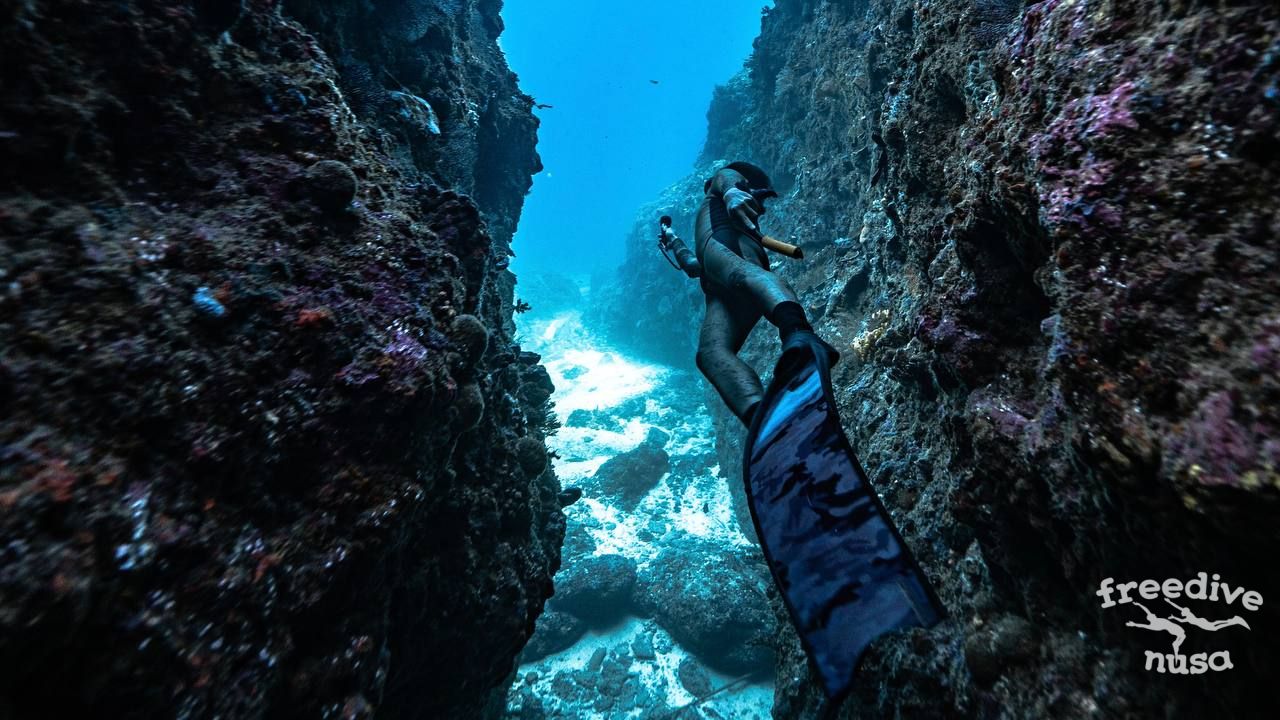
Indonesia’s underwater realm is an invitation to witness the ocean in its purest form. From the adrenaline-pumping drifts of Alor to the meditative calm of Kakaban’s jellyfish lake, each destination offers a unique experience.
What ties these places together is their ability to make us feel small in the best possible way. In a world where so much is controlled and curated, freediving is a return to something primal and profound. It’s a reminder that beneath the surface, we are merely visitors in a domain that belongs to the creatures who call it home.
For those ready to answer the call, the water is warm, the visibility endless, and the adventures limitless. The only question left is: where will you dive first?

